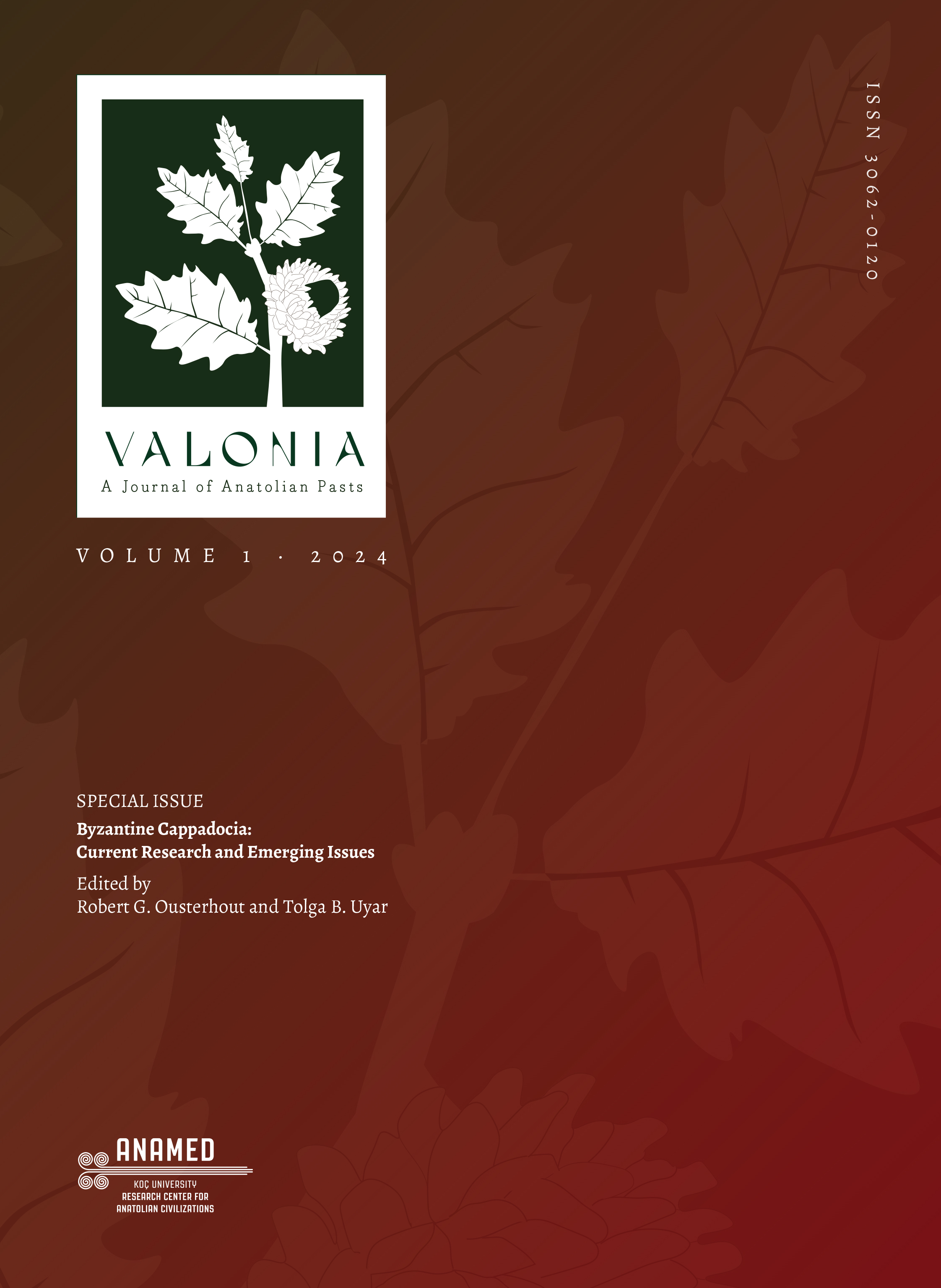
All articles in Valonia: A Journal of Anatolian Pasts are licensed under a Creative Commons Attribution-NonCommercial-NoDerivatives License.
Deconstructing an Iconography: Depictions of Constantine and Helena in Middle Byzantine Cappadocia
Lynn JonesFlorida State UniversityMiddle Byzantine Cappadocian depictions of Constantine and Helena offer a case study for the deconstruction of “standard” images.* All such depictions can be considered to be Feast Icons, as they present both Constantine and Helena, reflecting the Synaxarion text for May 21. The image compresses the narrative, allowing the viewer to contemplate some, or all, of the acts related in the Synaxarion. I suggest that we can go further; in an analysis of specific iconographical components gleaned from twenty-seven images in Cappadocian rock-cut churches, I recognize two types of Feast Icons: that of the Invention Cross and that of the Vision Cross. Regardless of classification, all Middle Byzantine representations of Constantine and Helena share multiple meanings: all reference the salvific promise symbolized by the Cross, all attest to the authenticity of the Cross and tie the Invention and ownership of relics of the Cross to the divine approval accorded to the Byzantine Empire, and all serve to link the first and current Emperor. The variables found in all of the images offer specific iconographical prompts for the viewer that could evoke any and all of these meanings. A third category can be justified, one that features only variables in which images feature both Constantine and Helena but do not conform to any single type. This group evokes meanings that both encompass and move between those of the Invention and Vision imagery. Their variability is not a misunderstanding of a standard, but a reflection of the needs and desires of a patron or community in order to convey a specific message within a specific space.
Keywords: Constantine, Helena, painting, deconstruction, feast icons
Deconstructing an Iconography: Depictions of Constantine and Helena in Middle Byzantine Cappadocia
Lynn JonesFlorida State ÜniversitesiOrta Bizans Kapadokyası’nın Constantinus ve Helena tasvirleri, “standart” imgelerin yapısökümü için bir örnek niteliğindedir. Synaksarion metninde 21 Mayıs tarihine atıfta bulunan Constantinus ve Helena’yı temsil ettiklerinden bu tasvirlerin tümünü “Yortu İkona”sı olarak değerlendirmek mümkündür. İmge, anlatıyı sıkıştırarak izleyicinin zihninde Synaksarion’da geçen eylemlerin bazılarının ya da tümünün canlanmasına neden olur. Hatta meseleye daha geniş bir çerçeveden bakarsak, Kapadokya kaya kiliselerinden derlenen yirmi yedi imgeyi belirli ikonografik bileşenler bağlamında analiz ettiğimizde iki tür Yortu İkonası ile karşılaşırız: Haç’ın Bulunuşu (Invention Cross) ve Haç’ın Görünümü (Vision Cross). Herhangi bir sınıflandırma yapmaksızın, Constantinus ve Helena’nın Orta Bizans dönemine ait tüm tasvirleri ortak anlamlara sahiptir: Bunların hepsi Haç’ın simgelediği kurtuluş vaadine gönderme yapar ve Haç’ın gerçekliğini doğrular ve yine bunların hepsi Haç röliklerinin “Bulunuşu”nu ve mülkiyetini Bizans İmparatorluğu’na tanınan ilahi onayla ilişkilendirir ve ilk ve son imparator arasında bir köprü kurar. İmgelerin tümünde bulunan değişkenler izleyiciye bu anlamlardan herhangi birini ya da tümünü çağrıştırabilecek ikonografik ipuçları sunar. Hem Constantinus’u hem de Helena’yı tasvir eden ancak tek bir tip altına girmeyen imgelerdeki değişkenleri içeren üçüncü bir kategoriden de söz etmek mümkündür. Bu grup Bulunuş ve Görünüm imgelemini kapsamakla birlikte, bunlar arasında gidip gelen anlamları çağrıştırır. Buradaki değişkenlik, standart olanın yanlış anlaşılmasıyla ilgili değildir; aksine belirli bir mekânda belirli bir mesaj iletmek isteyen bir haminin ya da topluluğun ihtiyaçlarının ve arzularının bir yansımasıdır.
Anahtar Kelimeler: Constantinus, Helena, resim, yapısöküm, yortu ikonaları
Manuscript Language: English


